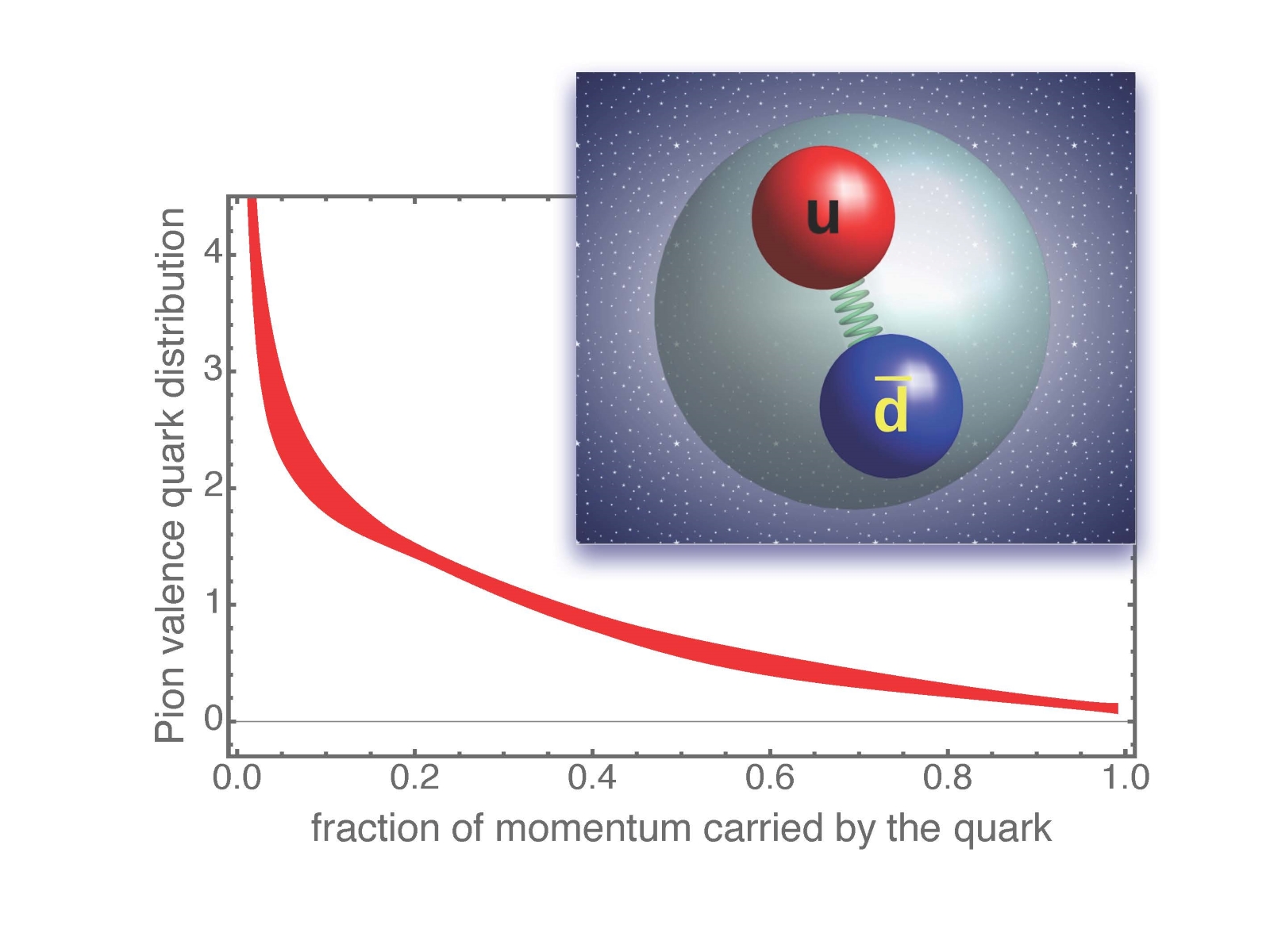Quarks and gluons are the building blocks of protons and neutrons, collectively called nucleons, which bind together to form nuclei that account for over 99% of the visible matter in our universe. Quarks are bound inside a nucleon by gluons through the strong nuclear force described by quantum chromodynamics (QCD), which is also responsible for the formation of atomic nuclei, and, as such, almost all visible matter in our universe. Over distance scales greater than the size of the nucleon, the strong force is also effectively mediated by mesons such as the pion and kaon, which are intimately connected to the origin of mass and confinement in QCD. The quark and gluon interactions inside the proton give rise to the many Standard Model phenomena probed at high-energy colliders such as Tevatron and Large Hadron Collider, and a precise understanding of them is crucial for the search of physics beyond the Standard Model.
The Theory Group uses lattice field theory to solve QCD at low energies for understanding the formation of nucleons, mesons, and light nuclei in terms of the quarks and gluons. The research of the lattice group includes developing innovative analytical and computational methods and exploiting the country’s most powerful supercomputers to carry out systematically controlled calculations for this goal. The above research will make predictions for the experimental programs at facilities such as Jefferson Lab and the forthcoming Electron-Ion Collider, which will guide them to areas of maximal discovery potential and help interpret associated results. Topics of interest to the lattice group include:
- 3D quark and gluon tomography of hadrons
- Gluon helicity contribution to the proton spin
- Quark and gluon orbital angular momentum
- Charge and mass distributions inside the proton
- Parton fragmentation
- Quark and gluon structure of nuclei
Recent activities include:
- “Lattice QCD Determination of the Bjorken-x Dependence of PDFs at Next-to-next-to-leading Order,” by X. Gao, A. D. Hanlon, S. Mukherjee, P. Petreczky, P. Scior, S. Syritsyn and Y. Zhao, has been accepted by Physical Review Letters [1].
- Project “Internal structure of strong interaction Nambu-Goldstone bosons”, with Yong Zhao as the PI, won the 2022 Innovative and Novel Computational Impact on Theory and Experiment (INCITE) award [2].
- “Getting up to speed on the proton: scientists develop groundbreaking theory for calculating what’s happening inside a proton travelling at the speed of light” [3, 4].
Funding Sources:
- U.S. Department of Energy Office of Science, Office of Nuclear Physics
Related References:
[1] “Lattice QCD Determination of the Bjorken-x Dependence of PDFs at Next-to-next-to-leading Order,” by X. Gao, A. D. Hanlon, S. Mukherjee, P. Petreczky, P. Scior, S. Syritsyn and Y. Zhao, arXiv: 2112.02208 [hep-lat], to appear in Phys. Rev. Lett.
[4] “Large-Momentum Effective Theory”, by X. Ji, Y.-S. Liu, Y. Liu, J.-H. Zhang and Y. Zhao, Rev.Mod.Phys. 93 (2021) 3, 035005.
